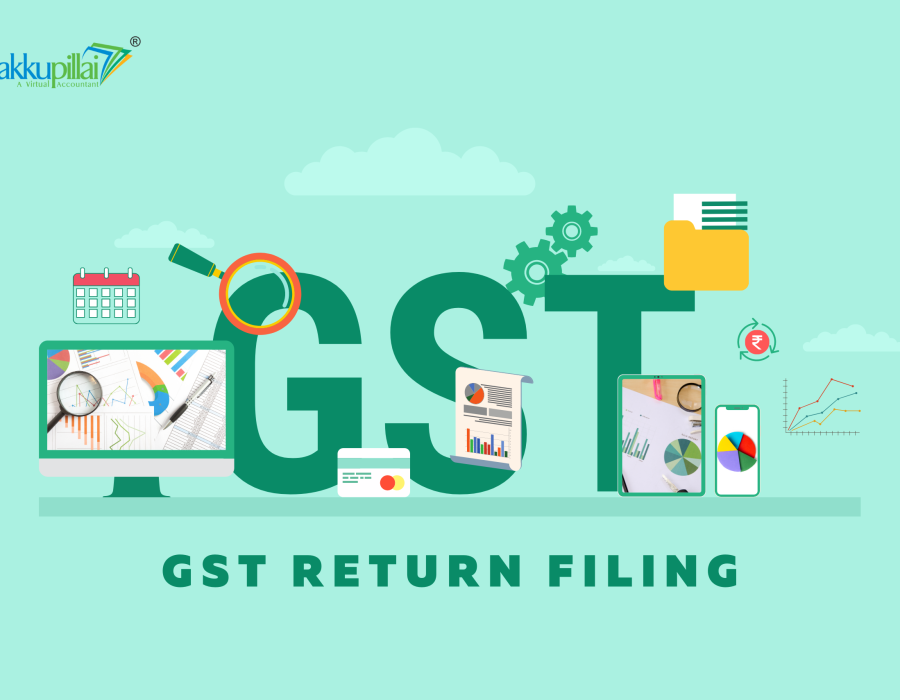Introduction
In today's ever-evolving business landscape, understanding the intricacies of taxation is crucial for businesses to comply with the law and maintain a smooth operation. Goods and Services Tax (GST) has revolutionized the tax system in many countries, including India. GST return filing plays a vital role in ensuring seamless tax administration and compliance. This article aims to provide a comprehensive overview of GST return filing, its significance, types, process, penalties for non-compliance, benefits, common challenges, and solutions.
What is GST?
Before diving into GST return filing, let's briefly understand what GST is. GST is a destination-based indirect tax levied on the supply of goods and services. It subsumes various central and state taxes, eliminating the cascading effect of taxes. GST is designed to streamline the taxation system, enhance ease of business, and promote uniformity nationwide.
Understanding GST Return Filing
GST return filing refers to submitting periodic returns containing information about a taxpayer's inward and outward supplies, tax liability, input tax credit, and other relevant details. These returns help tax authorities assess the taxpayer's tax liability and ensure compliance with the GST laws. It serves as a communication channel between the taxpayer and the tax department.
Importance of GST Return Filing
Filing GST returns accurately and on time is crucial for businesses to maintain transparency, avoid penalties, and establish credibility. It enables the government to track the flow of goods and services, monitor tax payments, and detect discrepancies. GST return filing online also facilitates the seamless availability of input tax credits, which reduces the overall tax burden on businesses.
Types of GST Returns
Different types of GST returns are based on the nature of the taxpayer's business activities. Let's explore a few essential types:
1) GSTR-1: Outward Supplies GSTR-1 is a monthly or quarterly return filed by registered taxpayers to provide details of their outward supplies of goods or services. It includes information about sales, invoices issued, and the amount of tax collected.
2) GSTR-3B: Summary Return GSTR-3B is a self-declaration summary return taxpayers must file monthly. It summarizes the details of outward and inward supplies, input tax credit availed, and the respective month's tax liability. It serves as a temporary return until a comprehensive return filing system is implemented.
3) GSTR-9: Annual Return GSTR-9 is an annual return that taxpayers must file to provide a consolidated summary of all their outward and inward supplies, input tax credits, and tax payments for the entire financial year. It ensures the reconciliation of tax-related information between the taxpayer's and the government's records.
GST Return Filing Process
To successfully file GST returns, businesses must follow a step-by-step process:
Step 1: Registering for GST The first step is to obtain a unique Goods and Services Tax Identification Number (GSTIN). Businesses can register online through the GST portal by providing the necessary documents and information.
Step 2: Collecting and Maintaining Invoices Businesses must collect and maintain accurate invoices for all inward and outward supplies. These invoices should contain essential details such as the supplier's and recipient's GSTIN, invoice number, date of supply, description of goods or services, quantity, and value.
Step 3: Reconciling and Correcting Errors Before filing the return, it is crucial to reconcile the invoices with the books of accounts and rectify any discrepancies or errors. This step ensures the accuracy of the information provided in the return.
Step 4: Filing the Return Using the GST portal, businesses can file their returns by entering the relevant details in the specified format. The portal provides various online tools and utilities to assist taxpayers in filing their returns accurately.
Penalties for Non-Compliance
Non-compliance with GST return filing requirements can result in penalties and legal consequences. Failure to file timely returns may attract late fees and interest on the outstanding tax liability. The penalties can vary based on the duration of the delay and the taxpayer's turnover.
Benefits of Timely GST Return Filing
Timely GST return filing offers several benefits to businesses:
- Avoiding penalties and legal issues: Filing returns on time helps businesses avoid penalties and legal complications.
- Availability of input tax credit: Timely return filing ensures the seamless availability of input tax credit, which reduces the overall tax burden.
- Enhanced business credibility: Complying with GST return filing requirements establishes the credibility of businesses in the eyes of tax authorities, suppliers, and customers.
- Smooth tax administration: Accurate and timely filing of returns facilitates the government's tax administration, leading to better compliance monitoring and reduced tax evasion.
Common Challenges and Solutions
While filing GST returns, businesses often face certain challenges. Here are some common challenges and their solutions:
1) Technical Issues Technical glitches on the GST portal or difficulties uploading return-related data can hinder the filing process. It is crucial to stay updated with any changes or updates to the GST portal and seek assistance from the helpline or support services.
2) Lack of Awareness and Understanding Many businesses struggle with understanding the complexities of GST return filing. Seeking guidance from tax professionals or attending training sessions and webinars can help enhance knowledge and overcome this challenge.
3) Complexity of Return Filing The process of collecting and reconciling invoices, calculating tax liability, and filing returns can be complex, especially for businesses with multiple branches or diverse business activities. Employing accounting software or engaging professional tax consultants can simplify the process and ensure accurate filing.





Comments